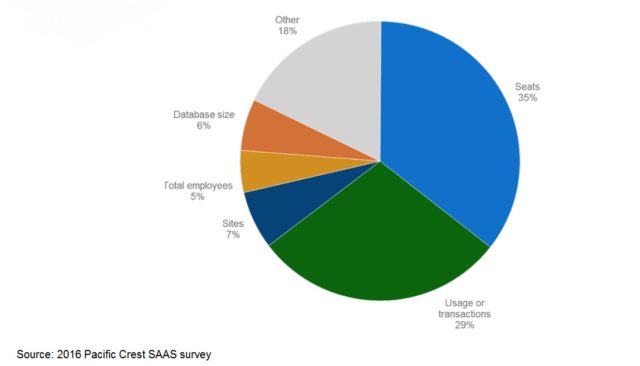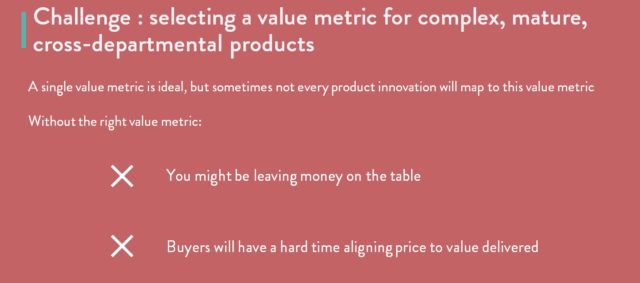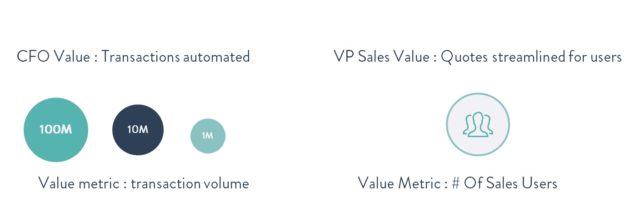Those of us who are responsible for pricing and packaging have read many articles about “value metrics” and how key they are to your pricing model. And here at Zuora, as we implement new customers, we see an increasing and varying number of value metrics in the market.
We see everything from users, to GB, to minutes, to bandwidth, to CPU, to locations…you name it. We’ve even designed our product to allow customers to configure any value metric — or “unit of measure” as we call it in our system — versus limiting our customers to just using what comes out of the box.
This recent SaaS survey conducted by Pacific Crest also supports the trend that more and more companies are pricing by more than just seats or users.

Single vs Multiple Value Metrics
One of the questions — and often a point of concern — we hear from other businesses in the Subscription Economy is whether a product should have one or multiple metrics that drive its price.
Often businesses want to keep to one single metric in order to ensure that their pricing is clear and easy to understand — and easy to map to value for their buyers.
We wholeheartedly agree that any metrics that you use to assign value and ultimately drive price for your product should be easy to understand and easy to map to value for your buyers. We would go even further to recommend that you ensure it is easy for you to measure and track this value within your own system, since we all know that you cannot monetize what you cannot measure.
Ideally, you always want to have one metric that drives price and aligns to value.
However, it is not always easy for companies with mature or complex or cross-departmental products to align the value they deliver to a single metric. So what to do when one metric won’t suffice?

Map one value metric to each buying persona
For those companies needing to have more than one value metric, one suggestion is to have one single value metric per persona, like so:

In this example, the company delivers products that have different perceived values to different stakeholders and buyers within their market.
The value delivered to a CFO is automation complex transactions, with the least amount of user intervention. So, in this case, the volume of transactions — not users — is what drives the price.
On the other hand, the value delivered to a VP of sales is the streamlining and standardization of quote created by users on his team. So the number of users drives the prices.
This model allows for simplicity: each buyer understands, and is able to map value to the ONE metric that drives the price they pay. While avoiding creating unnecessary complexity and confusion for buyers, it also allows the provider to maintain multiple value metrics.
Ultimately, price is a way of quantifying value and packaging is a way of expressing, enhancing and underscoring that value.
The best strategy will let you put a number on the benefit that customers value most, and the right packaging should help them understand and appreciate that value. The goal is to optimize your revenue by letting your customers pay for the value they derive and that they perceive.